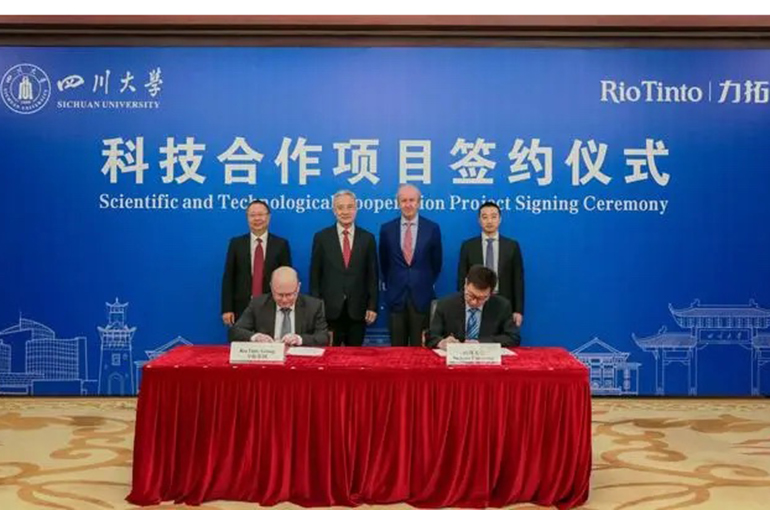 Rio Tinto, Sichuan University Link Arms on Ways to Turn CO2 Into Solid Mineral
Rio Tinto, Sichuan University Link Arms on Ways to Turn CO2 Into Solid Mineral(Yicai Global) June 7 -- Rio Tinto has reportedly teamed up with China's Sichuan University to conduct innovative research on carbon mineralization techniques that would enable the mining giant to reduce its carbon footprint and solid waste disposal.
The pair will explore an optimal method for carbon mineralization and apply the new technology to solid waste disposal, turning waste into marketable products, The Paper reported yesterday, citing the deal London-based Rio Tinto signed with Sichuan University on June 5.
Carbon mineralization is the process by which carbon dioxide gas becomes a solid mineral. The biggest advantage of this is that the CO2 cannot then re-enter the atmosphere.
“Climate change and low-carbon transformation are the core of Rio Tinto's strategy,” Chief Scientist Nigel Steward said. “We constantly develop and assess innovative technologies to reduce carbon footprint and expect to seek new growth points from that.”
Sichuan University values the new partnership, Vice President Liang Bin said. The deal is an opportunity for the two to work further on the research and development of green low-carbon technologies, industrial applications, and other fields, and promote the green and low-carbon energy transformation to help deal global climate change, Liang added.
Besides green mining, green steel is also a main focus of Rio Tinto's steel business in China, given the global carbon reduction efforts, Chief Executive Simon Trott recently said.
Green mining is the use of technologies and mining processes that aim to reduce any possible environmental impact during the extraction and processing of metals and minerals from a mine. Green steel refers to the production of the alloy using environmentally friendly and sustainable methods.
Rio Tinto signed a memorandum of understanding with China Baowu Steel Group and Tsinghua University on climate change in September 2019. In December 2020, the firm announced it would spend USD10 million to cooperate with Baowu on low-carbon iron production and related research over the next two years.
Editor: Futura Costaglione